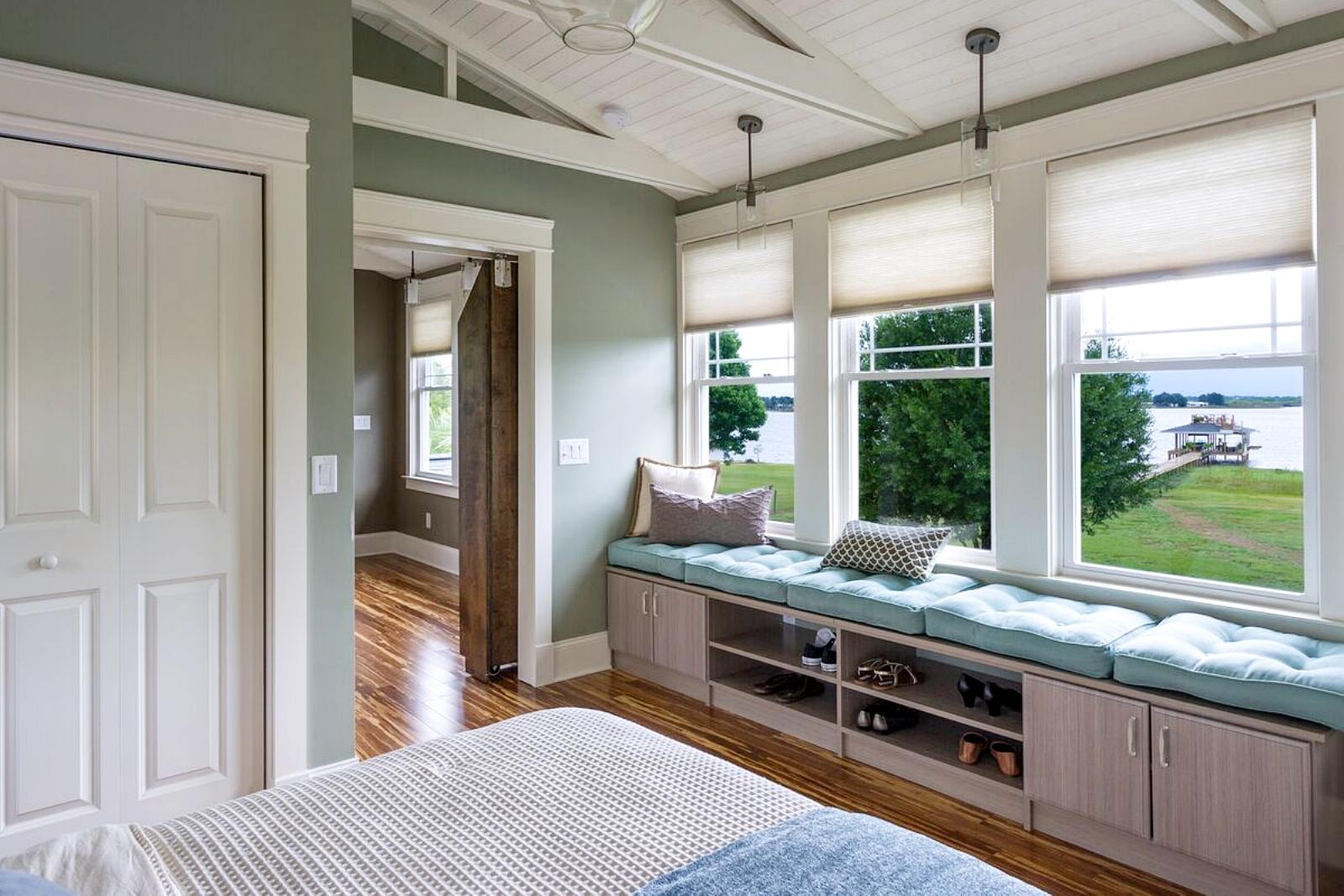What is the meaning of the furniture term Acroterium?
Answer: An acroterium is a decorative element or ornament that is often found on the top or corners of furniture pieces, particularly on cabinets, desks, or other architectural features. It is typically made of wood, metal, or stone and is used to enhance the aesthetic appeal of the furniture... read more
| Previous term: Acorn | Next term: Adirondack Chair |
DIY Closet Organizer System
Discover this guide to closet organizers and closet systems. From easy, budget-friendly solutions to expert tips and tricks, transform your messy wardrobe into a perfectly organized haven. Using closet organizers has several advantages, making them a popular choice for individuals looking to improve their storage space.

Discover this guide to closet organizers and closet systems. From easy, budget-friendly solutions to expert tips and tricks, transform your messy wardrobe into a perfectly organized haven. Using closet organizers has several advantages, making them a popular choice for individuals looking to improve their storage space.

What is the meaning of the furniture term Acroterium?
Acroteria can take different forms, such as finials, figurines, or carved motifs, and are often used to add a sense of grandeur or architectural significance to the furniture design. Ornaments applied to the top corners of bookcases, secretaries. Originally an ornament of Greek temples. Acroterium, also known as an acroterion (plural: acroteria), is a term used in architecture to refer to an ornamental element that is placed on top of a pediment or a roof ridge. It is a decorative feature that adds visual interest and significance to the structure.
Originally, acroteria were used in ancient Greek and Roman architecture to adorn the corners or peaks of pediments - the triangular section found above the entablature, which is itself supported by columns. The acroteria were often produced in the form of sculptures or reliefs depicting figures from mythology, animals, or other decorative motifs.
In traditional furniture, the term acroterium can also refer to a decorative element that is applied to the top corners or edges of a piece. For example, on a cabinet or a sideboard, an acroterium might be a small scroll or a carved element that visually enhances the overall design of the furniture.
Acroteria can be made from various materials, such as stone, wood, metal, or even synthetic materials. They are typically meticulously crafted and intricately designed to harmonize with the overall style of the architecture or furniture piece. The choice of material and design of the acroterium often reflects the period, culture, and artistic aesthetic of the particular architecture or furniture piece it adorns.
While acroteria were initially used in classical architecture, they have also found their way into more contemporary designs. In modern architecture and furniture design, acroteria might be simplified or abstracted, using minimalist or geometric shapes, or they might be completely omitted altogether, depending on the desired aesthetic and functionality.
Acroterium refers to an ornamental element placed on top of a pediment or a roof ridge in architecture. It serves to enhance the visual appeal of the structure, often featuring figures or motifs from mythology. In furniture, acroterium refers to a decorative element applied to the top corners or edges of a furniture piece, enhancing its overall design.
Acroteria can take different forms, such as finials, figurines, or carved motifs, and are often used to add a sense of grandeur or architectural significance to the furniture design. Ornaments applied to the top corners of bookcases, secretaries. Originally an ornament of Greek temples. Acroterium, also known as an acroterion (plural: acroteria), is a term used in architecture to refer to an ornamental element that is placed on top of a pediment or a roof ridge. It is a decorative feature that adds visual interest and significance to the structure.
Originally, acroteria were used in ancient Greek and Roman architecture to adorn the corners or peaks of pediments - the triangular section found above the entablature, which is itself supported by columns. The acroteria were often produced in the form of sculptures or reliefs depicting figures from mythology, animals, or other decorative motifs.
In traditional furniture, the term acroterium can also refer to a decorative element that is applied to the top corners or edges of a piece. For example, on a cabinet or a sideboard, an acroterium might be a small scroll or a carved element that visually enhances the overall design of the furniture.
Acroteria can be made from various materials, such as stone, wood, metal, or even synthetic materials. They are typically meticulously crafted and intricately designed to harmonize with the overall style of the architecture or furniture piece. The choice of material and design of the acroterium often reflects the period, culture, and artistic aesthetic of the particular architecture or furniture piece it adorns.
While acroteria were initially used in classical architecture, they have also found their way into more contemporary designs. In modern architecture and furniture design, acroteria might be simplified or abstracted, using minimalist or geometric shapes, or they might be completely omitted altogether, depending on the desired aesthetic and functionality.
Acroterium refers to an ornamental element placed on top of a pediment or a roof ridge in architecture. It serves to enhance the visual appeal of the structure, often featuring figures or motifs from mythology. In furniture, acroterium refers to a decorative element applied to the top corners or edges of a furniture piece, enhancing its overall design.
Copyright 2026 - Furniture Glossary. All rights reserved.
